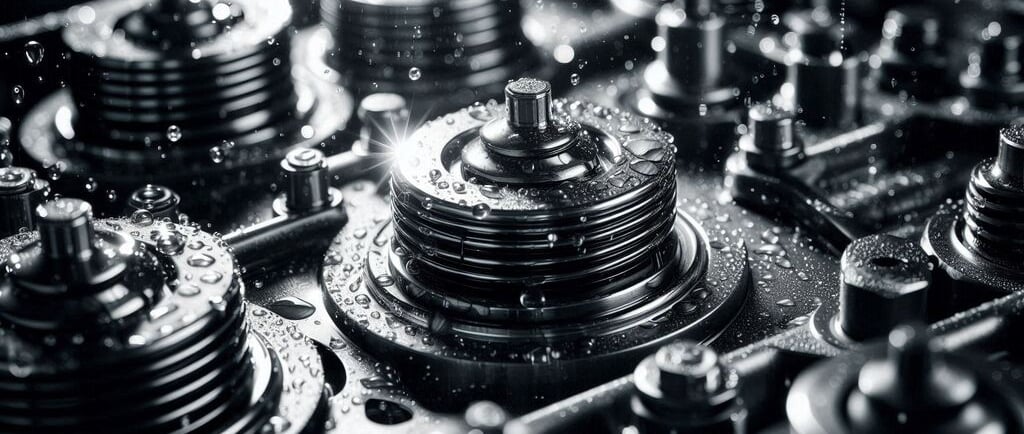Engine Valves
Engine valves are like gatekeepers for your engine.
ENGINE COMPONENTS
11/13/20244 min read


When it comes to your car's engine, there are a few key parts that determine how well it performs, and engine valves are among the most critical. These small components open and close rapidly, controlling the flow of air and fuel in and out of the engine’s combustion chamber. For anyone looking to understand what makes their vehicle tick—or improve its performance—understanding engine valves is a great place to start. Let’s dive in!
What Are Engine Valves?
Engine valves are like gatekeepers for your engine. They manage the intake and exhaust processes by opening and closing at precise intervals, allowing the right amount of air and fuel mixture in, and letting out exhaust gases after combustion. Typically, an engine will have two main types of valves: intake and exhaust.
Types of Engine Valves
Intake Valves: These allow the air-fuel mixture to enter the combustion chamber.
Exhaust Valves: These let the gases created during combustion exit the engine.
With the help of a camshaft, each valve opens and closes at the exact moment it’s needed. This timing is critical for a balanced, efficient engine operation.
Why Are Engine Valves Important?
Engine valves are crucial because they directly impact your engine’s performance and fuel efficiency. Poorly functioning valves can lead to inefficient combustion, resulting in reduced power, increased fuel consumption, and potentially even serious engine damage.
Key Benefits of Properly Functioning Engine Valves:
Fuel Efficiency: Well-maintained valves allow for efficient fuel use, giving you more miles per gallon.
Engine Power: Proper valve function ensures that the engine operates at optimal power, especially during acceleration.
Reduced Emissions: Efficient valve timing helps reduce the amount of unburned fuel emitted into the atmosphere.
Common Types of Engine Valve Designs
While all engine valves serve the same basic purpose, they come in various designs, each with its own advantages. Here are a few of the most common types:
1. Poppet Valves
This is the most common type of valve in combustion engines, featuring a disc shape with a stem. When the camshaft presses on the valve, it moves up and down like a “popping” motion, hence the name.
2. Rotary Valves
Rather than moving up and down, rotary valves rotate to open and close. They’re commonly found in high-performance engines due to their efficiency and ability to withstand high RPMs.
3. Reed Valves
Common in two-stroke engines, reed valves work like a one-way flap, allowing air to enter the engine without letting it escape. They’re simpler than poppet valves and well-suited for high-speed applications.
Each valve type has unique applications, but poppet valves remain the standard in most automotive engines due to their reliability and cost-effectiveness.
How Do Engine Valves Work?
Engine valves operate with the camshaft, which controls their movement and timing. Here’s a basic breakdown of how it works:
Intake Stroke: The intake valve opens, allowing the air-fuel mixture to enter the combustion chamber as the piston moves down.
Compression Stroke: Both valves close, and the piston compresses the air-fuel mixture.
Power Stroke: The spark plug ignites the compressed mixture, causing an explosion that pushes the piston down. Both valves remain closed during this stroke.
Exhaust Stroke: The exhaust valve opens, allowing combustion gases to exit as the piston moves up.
This process, known as the four-stroke cycle, repeats thousands of times per minute to keep your engine running smoothly. A slight timing issue with any valve can disrupt this cycle and affect overall engine performance.
Signs of Engine Valve Problems
Just like any other component, engine valves are subject to wear and tear. Here are a few signs that may indicate issues with your valves:
Reduced Engine Power: If you notice your car struggling to accelerate or maintain speed, it could be due to a valve problem.
Increased Fuel Consumption: Damaged valves often lead to inefficient fuel combustion, which can increase fuel consumption.
Unusual Noises: Clicking, tapping, or popping sounds from the engine are often a sign of valve issues.
Excessive Smoke from Exhaust: Damaged exhaust valves can lead to improper combustion, producing white or blue smoke from the exhaust.
If you notice any of these signs, it’s essential to get your vehicle checked by a mechanic as soon as possible to prevent further damage.
Tips for Maintaining Your Engine Valves
Regular maintenance can extend the life of your engine valves and improve your car's overall performance. Here are some tips to keep your valves in top shape:
Regular Oil Changes: Engine oil lubricates the valves and reduces wear. Stick to your car’s recommended oil change intervals to keep things running smoothly.
Check for Valve Clearance: Over time, valve clearances can shift, affecting timing and causing wear. A mechanic can adjust the valve clearances to maintain optimal performance.
Inspect Timing Belt or Chain: A worn timing belt can impact valve timing, leading to poor engine performance. Regularly inspect and replace it as recommended by your vehicle’s manufacturer.
Following these maintenance tips can prevent expensive repairs down the road and keep your engine performing well.
FAQs About Engine Valves
Q: Can I drive with a damaged engine valve?
A: It’s possible but not recommended. Damaged valves can cause further engine damage and reduce fuel efficiency. Address valve issues as soon as possible to avoid larger repair costs.
Q: How often should I get my valves checked?
A: Many experts recommend inspecting valve clearances every 30,000 miles, but this may vary depending on your vehicle and driving habits. Check your owner’s manual for specifics.
Q: What happens if my timing is off?
A: Incorrect timing can lead to poor engine performance, reduced fuel efficiency, and even engine failure if left unchecked.



